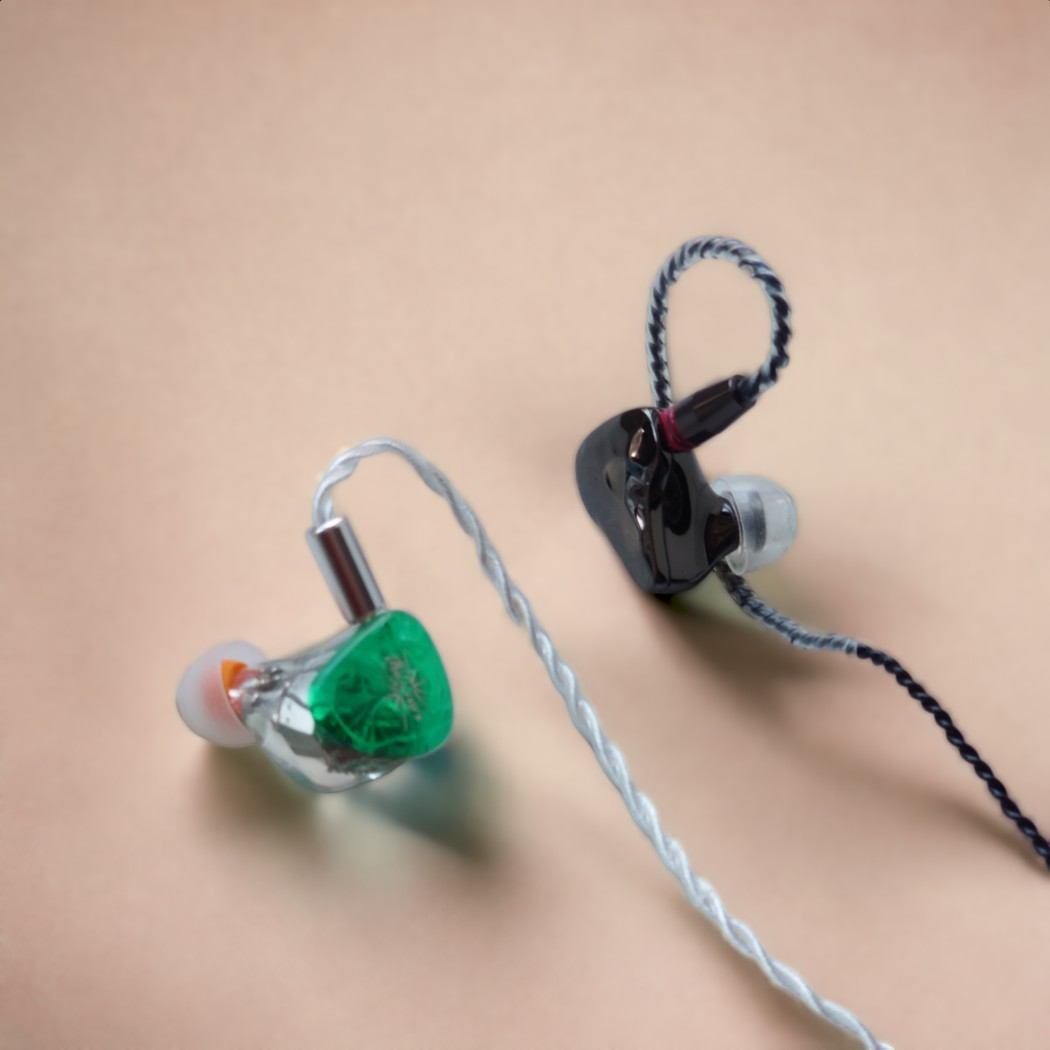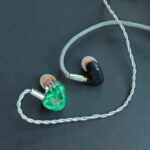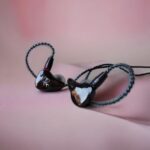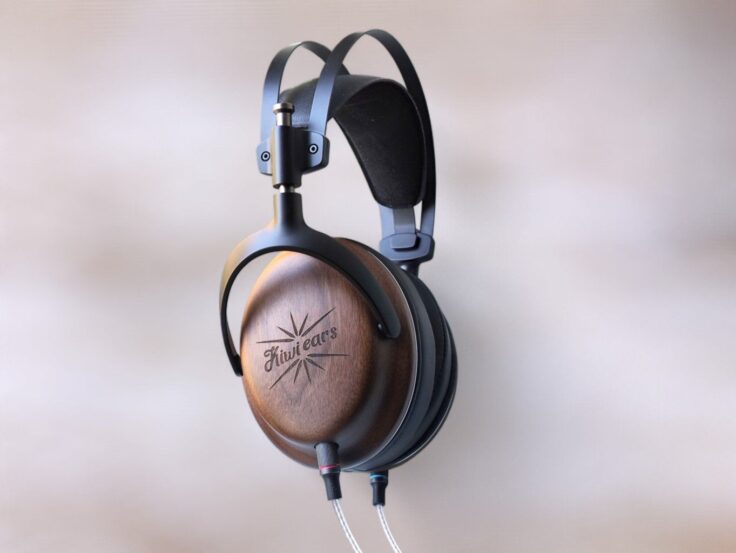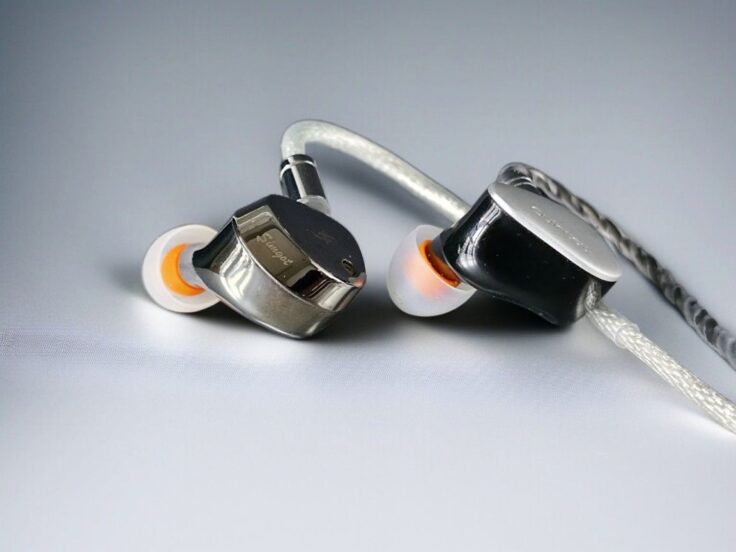This a a/b comparison of the Kiwi Orchestra Lite and the iKKO OH10 Obsidian In Ear Monitors. They’re in the same price range. I’ve done separate reviews of both if you want to read more.
The iKKO OH10 has two drivers per side; a single Dynamic Driver (DD) with a polymer titanium-coated diaphragm and a Knowles 33518 Balanced Armature driver. The housing is made of a copper alloy and covered with a very exclusive-looking skin-friendly coating. The OH10 has been a long-standing favourite for many listeners. iKKO has released the OH10S, time will show whether it will be as cherished predecessor.
Now, with the Orchestra Lite, Kiwi Ears didn’t feel it was enough with two drivers, so they went for eight. However, they are all (custom) Balanced Armature drivers (BA): Two ultra tweeters for the treble, four midrange BA drivers for the mids, and two subwoofer BA drivers for the lows. The Orchestra Lite utilizes a three-way passive crossover.
When it comes to the build they are also very different in terms of material choice. The OH10 is metal (coated copper alloy) and the Orchestra Lite is made of medical-grade resin. They are also very different in terms of weight, the OH10 being significantly heavier. When it comes to size they are, however, comparable. With regards to wearing comfort, I must give this to the Orchestra Lite because it is significantly lighter, however, I do find the OH10 to sit comfortably in my ear despite its size and weight.
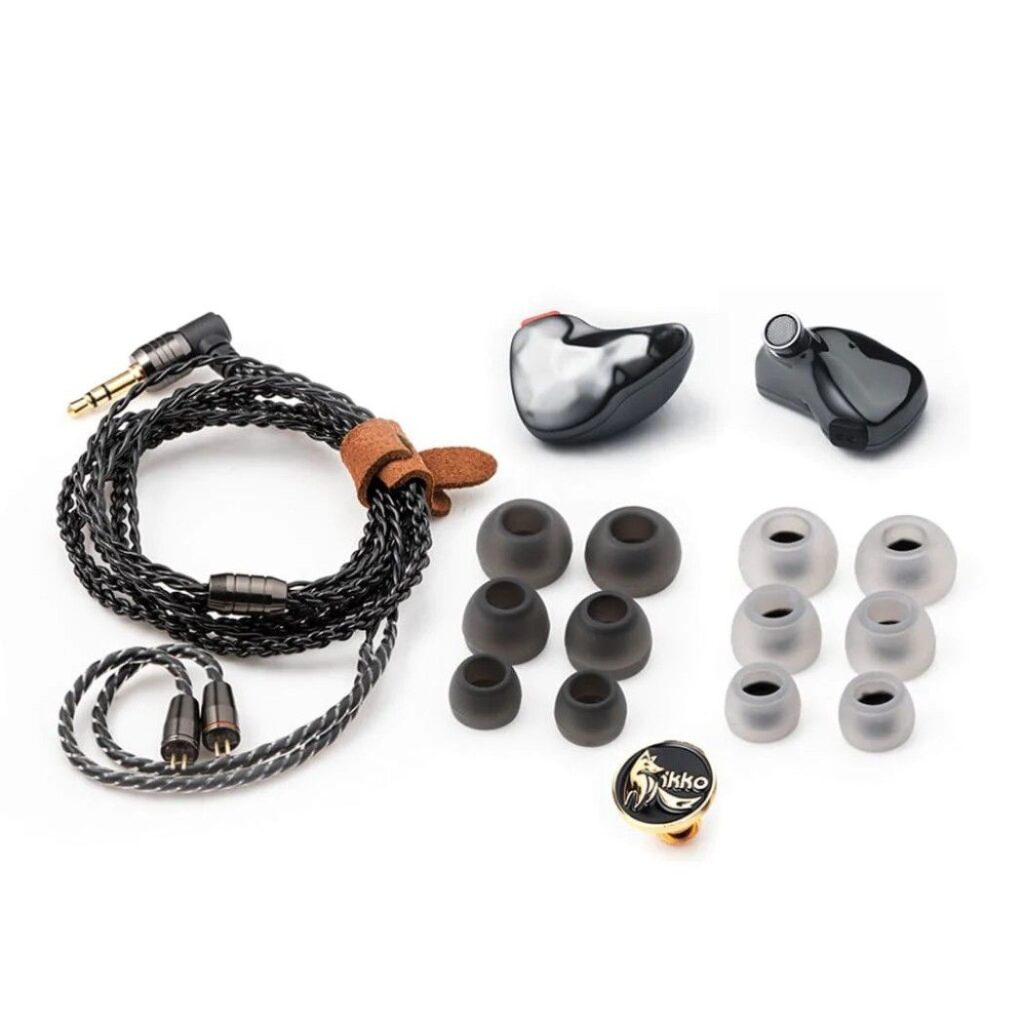
IKKO OH10 SPECIFICATIONS
- Impedance: 18Ω
- Sensitivity: 106dB/mW
- Frequency Response Range: 20-40KHz
- Cable Length: 1.2m
- Sound Principle: Hybrid Dynamic and Balanced Armature Drivers
- Connector: 0.78mm Two-Pin Connector
- Plug Diameter: 3.5mm
- Cable Material: 27um High-Purity Single Crystal Copper Plated Wire
- Balanced Armature Drivers: Knowles 33518
- Dynamic Drivers: Polymer Titanium-Coated Diaphragm
- Main Material: Copper Alloy with Skin-Friendly Coating
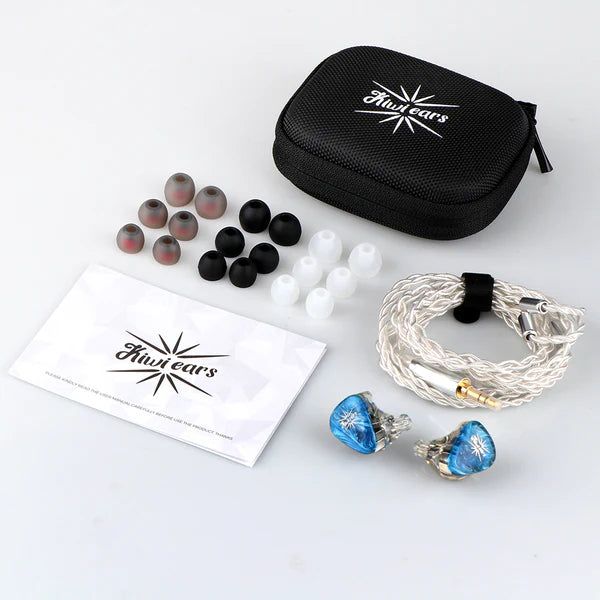
KIWI EARS ORCHESTRA LITE SPECIFICATIONS
- Drivers: Kiwi Ears Customized HI*2+Kiwi Ears Customized MID*4+Knowles LOW*2
- Impedance: 18 ohms
- Sensitivity: 112dB
- Cable: 1.2 m oxygen-free silver-plated copper
- Cable plug type amp: 3.5mm
- Cable plug IEM: Detachable 0.78mm 2 Pin
- Tips: Silicon type, 3 sizes
- Carry pouch included
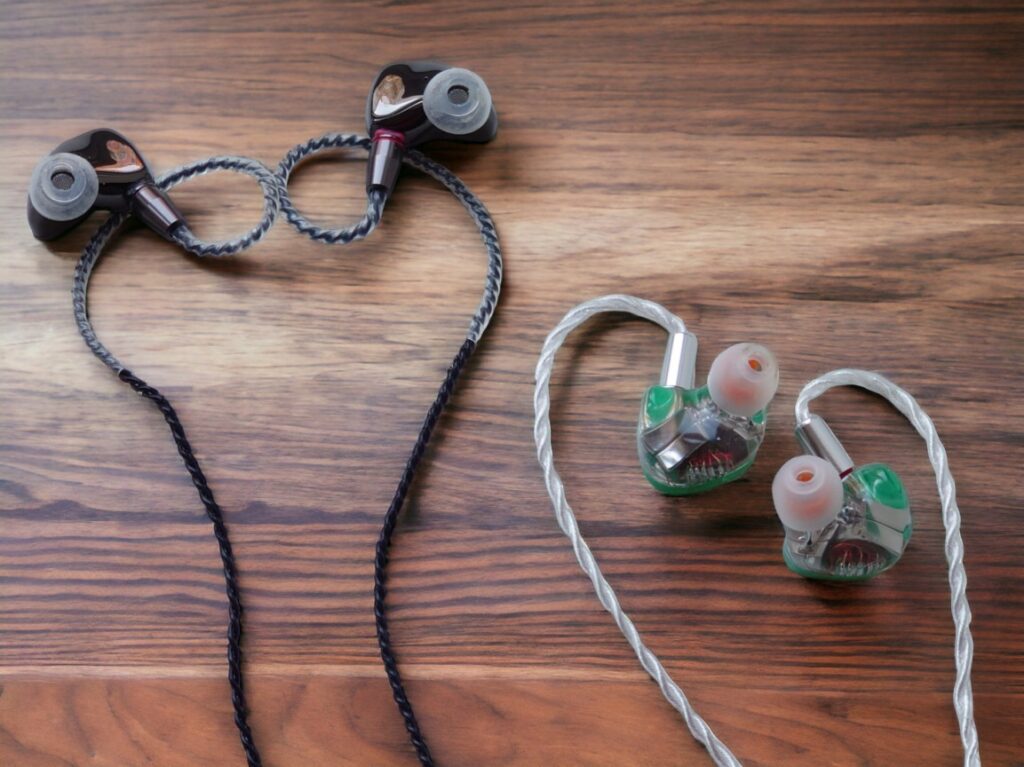
COMPARISONS
I used the Topping A90 amp and the RME ADI-2 DAC FS (as a source) for this comparison. I tried it different amplifiers but it did not significantly change the difference between the two IEMs compared.
Four by Arild Andersen Group
In the intro, the standing bass has a good body and warmth to the tones with the iKKO. The saxophone is warm and airy sounding. When the track gets busy, the OH10 handles it very nicely. The bass is strong, the percussion snappy and it’s easy to follow the instruments.
The Orchestra Lite is more neutral sounding, with less bass. At first, it felt a little less engaging, but after getting accustomed to the sound signature, I appreciated the more balanced presentation. Both have great detail, but the OH10 sounds more dynamic, it’s got more bass and highs and this is a bass and percussion-driven track that suits it well.
Present Tense by Radiohead
The OH10 has a heavy bass drum that really gives the track a rock-solid foundation. There’s a nice warmth to the presentation, the vocals are smooth, the guitar and the percussion are crisp and spacious.
The bass drum is less dominant in the mix with the Orchestra Lite. The guitar, and especially the vocals, come much more to their right. Thom Yorke’s voice is beautifully rendered. Smooth and detailed. The layers of various instruments and vocals are presented in a delicious way, the complexity is more apparent than with the OH10.
Higdon’s Fly Forward by Hilary Hahn
The OH10 has great separation and layering, there’s a lot of air between the instruments. The violin sounds beautiful.
The Orchestra Lite has a quite different tuning, the violin sounds drier. However, it’s a great presentation – just different. The strings have lots of texture. The instruments are well-balanced sounding. There’s more midrange focus, and the sense of separation is a little less than that of the OH10.
Hellhound by Cassandra Wilson
The Orchestra Lite lets the vocals really take centre stage. Wilson’s voice is really smooth, nuanced and beautifully rendered.
The OH10 offers a crisper guitar with deeper sounding and fuller bass. There’s also a bigger sense of space and air between instruments.
Electrified by Boris Blank
The bass is impressive with the OH10. The trumpet is sharp and crisp, there’s lots of space between the instruments.
The Orchestra Lite is more mid-centric and gives a different experience. The bass is satisfying also here, but the midrange instruments get more attention. There’s less immediate sense of instrument separation, but there’s plenty of detail and the soundstage is big.
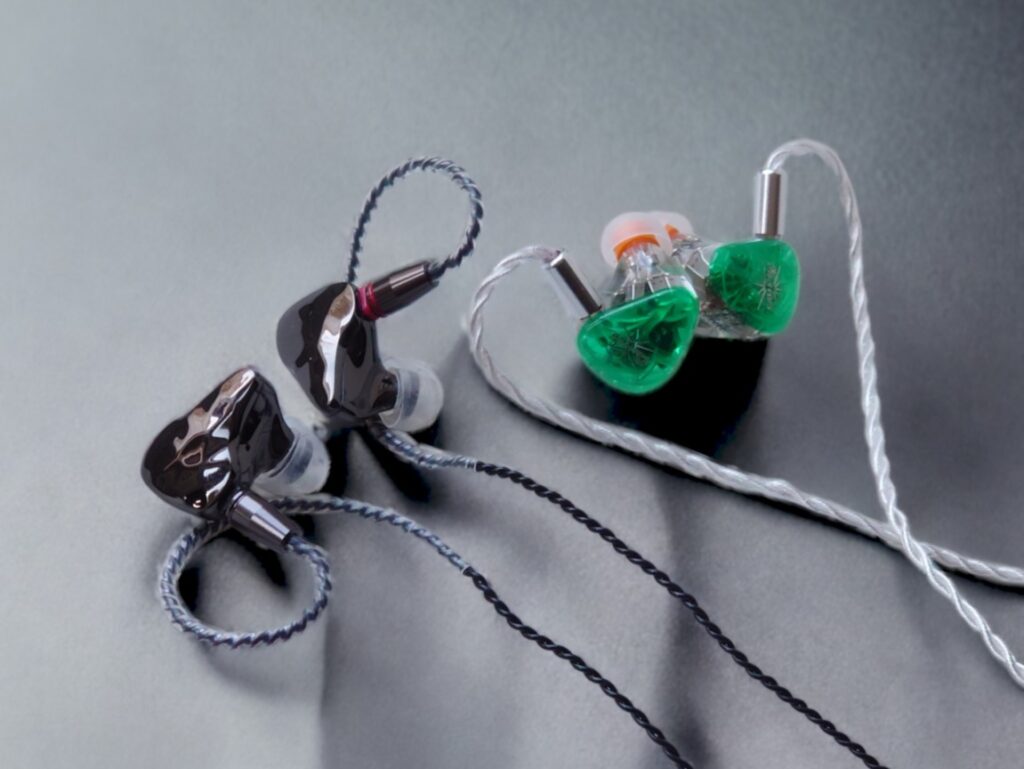
WRAPPING IT UP
The OH10 has a more V-shaped sound profile. There’s more focus on the bass and highs. With the Orchestra Lite, the mid-range gets more attention. I find the OH10 to sound more dynamic and fun, the Orchestra Lite is more neutrally tuned and more even across the frequency spectrum.
The treble is clear and crisp on both. The mids are smooth, but more recessed with the OH10. The bass is good on both, but more elevated with the OH10.
The soundstage feels bigger with the Orchestra Lite, while instrument separation and imaging are a little better with the OH10.
CONCLUSION
I really like both of these IEMs. They are different. For a neutral and smooth sound with a wider soundstage, the Orchestra Lite is the better choice. For a more “fun” tuning, with more bass and better imaging, the OH10 is great.
Buy on Linsoul: Kiwi Orchestra Lite
Buy on Amazon: Kiwi Orchestra Lite
Buy on Amazon: iKKO OH10S
Any purchase you make on Amazon or Linsoul with any of our affiliate links will give us a small provision at no cost to you.
We only get a provision for items that are not returned, so there’s no incentive for us to recommend something that’s not good.
Linsoul : Headphones, Earbuds, Wireless Earbuds, Desktop DAC/AMP, Portable DAC/AMP, Digital Audio Players,
Amazon: Headphones, IEMs, Headphone Amplifiers, Home Audio or Anything else.
.
If you enjoyed this article or other content on The Headphoneer, you might consider leaving a small donation to keep this website up and running. No donation is too small. Thanks for supporting us!
If you like our work please follow us on Instagram, Facebook and Twitter , it will help us grow. Sharing is caring 🙂


